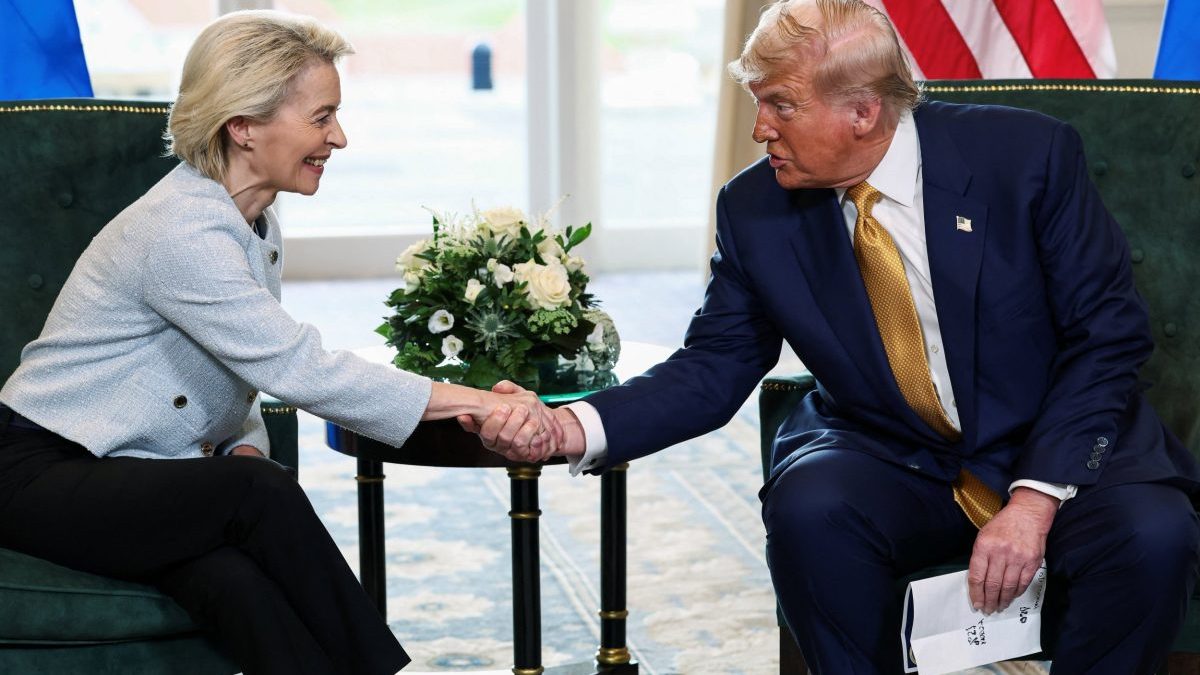
In the end, this is a deal more about tone than trade – Europe avoided escalation, Trump got a photo op and a headline
In a display of geopolitical flattery with strategic intent, European Commission President Ursula von der Leyen has handed Donald Trump a win he can wave at supporters – while quietly dodging the bullet of an all-out transatlantic trade war.
The new US-EU trade deal, announced at the Turnberry golf course in Scotland with Trumpian fanfare and EU caution, lifts the spectre of punishing new tariffs on European exports, particularly in sensitive sectors like cars and luxury goods.
But beneath the surface, the deal does little to reduce existing trade barriers. Indeed, it raises them considerably compared to six months ago.
The agreement appears to freeze hostilities more than it forges genuine progress. While it removes Trump’s threat of tariffs as high as 50 per cent on nearly all EU goods, it preserves most of the Trump-era tariffs and introduces new sectoral levies in return for modest EU market openings.
The result is 15 per cent tariffs across the board – lower that Prime Minister Keir Starmer secured for the UK in May – and includes commitments to increase in EU imports of US LNG and certain agricultural products. But it falls well short of the comprehensive liberalisation the Commission and previous US administrations have long advocated.
Trump claims the EU will purchase $750bn in US energy, as well as raising overall investment in the US by $600bn, although it is unclear how governments will guarantee businesses will make those decisions.
Von der Leyen’s gamble was clear: feed Trump a narrative of victory, while ringfencing Europe’s key industries from fresh shocks.
Trump’s claim that the EU was scamming the US on trade was seen as preposterous in Brussels, and his linking of tariffs to the trade deficits was derided as economic mumbo jumbo. The EU could have fought back: it has an equivalent GDP and trade footprint, as well as the tools to impose counter tariffs. But the EU did not have the stomach for such a clash, and effectively sued for peace.
The result is a tactical concession wrapped in diplomatic theatre. Trump gets to declare that he has tamed Europe’s “unfair” trade practices, even though most of the deal’s substance merely tweaks quotas and regulations rather than transforming the terms of trade.
EU officials say this is the bloc’s biggest ever trade deal, even if it raises tariffs. But the alternative – a trade war with a protectionist White House – was judged more damaging.
Von der Leyen, known for her polished diplomacy and calculated charm, played to Trump’s vanity during negotiations.. The rapport evidently helped sidestep confrontation – but it also signals a strategic shift. Europe is buying time and stability, even at the cost of longer-term principles.
In the end, this is a deal more about tone than trade. Europe avoided escalation. Trump got a photo op and a headline. The tariffs may rise – but at least, for now, the temperature has not.
